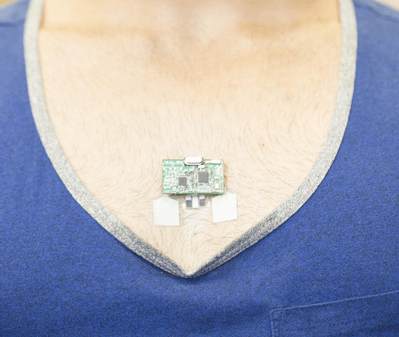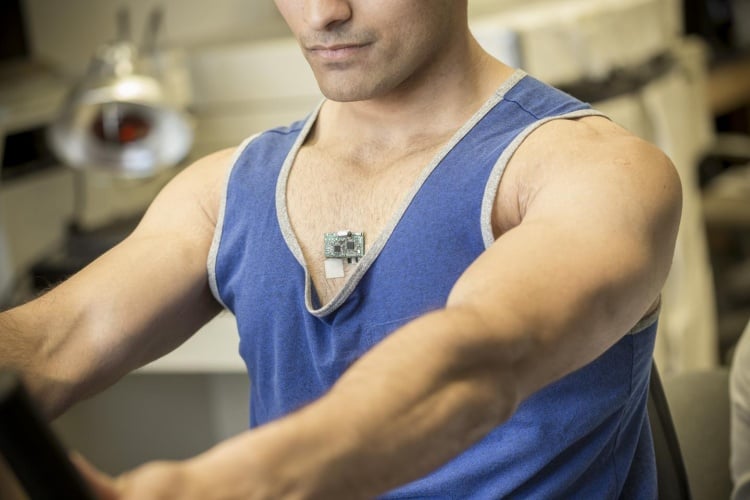Known as the Chem-Phys patch, the device measures electrocardiogram (EKG) signals, while at the same time tracking levels of lactate, which builds up in the body during physical effort. Receiving feedback on these two biomarkers from a single wearable device could be particularly useful for athletes monitoring their training, as well as for treating patients with conditions such as heart disease. The work is outlined in the latest issue of Nature Communications.

"One of the overarching goals of our research is to build a wearable tricorder-like device that can measure simultaneously a whole suite of chemical, physical and electrophysiological signals continuously throughout the day," said Prof Patrick Mercier from UC San Diego’s Jacobs School of Engineering. "This research represents an important first step to show this may be possible."
According to the team at UC San Diego, one of the biggest challenges was calibrating the sensors so that their individual signals didn't interfere with each other. Most wearables only measure one signal, such as heart rate, and almost none measure chemical signals. The researchers began by screen printing the patch on a thin, flexible polyester sheet. A lactate sensor was printed in the centre, with an EKG electrode on either side. After several iterations, it was found that a distance of 4cm between the two EKG electrodes was optimal.

To isolate the electrodes from the lactate sensor, the team used a layer of soft silicone rubber. This allowed the sensor to come into contact with the slightly conductive sweat from the body, but kept sweat away from the EKG electrodes. The sensors were connected to a small custom-printed circuit board equipped with a microcontroller and a Bluetooth Low Energy chip, which wirelessly transmitted data to a smartphone or computer.
During testing, data collected by the Chem-Phys patch closely aligned with data gathered from separate commercial devices. According to the researchers, the next stages of the work will involve adding sensors for other chemical markers such as magnesium and potassium, along with other vital signs.




Nanogenerator consumes CO2 to generate electricity
Nice to see my my views being backed up by no less a figure than Sabine Hossenfelder https://youtu.be/QoJzs4fA4fo